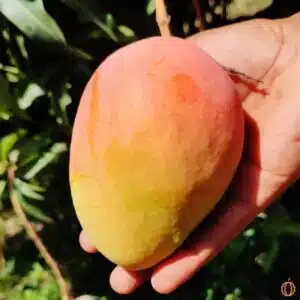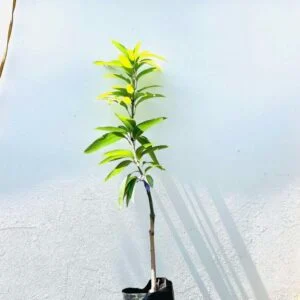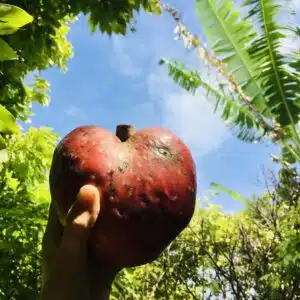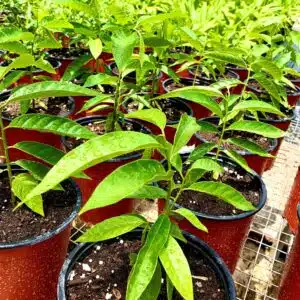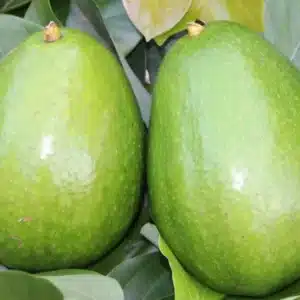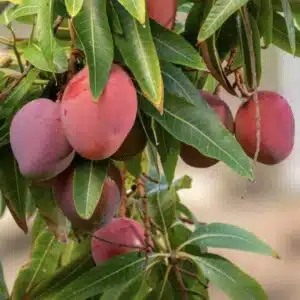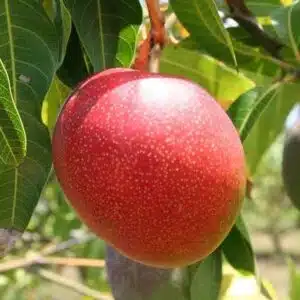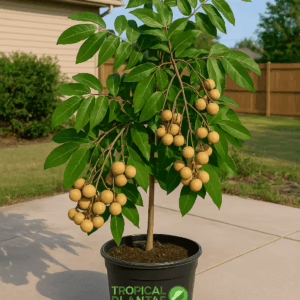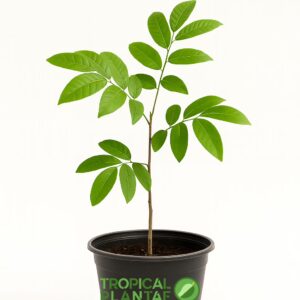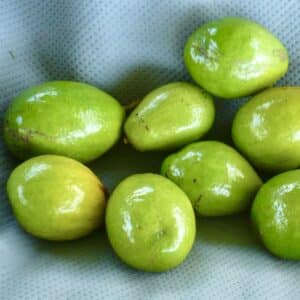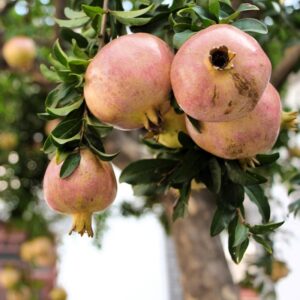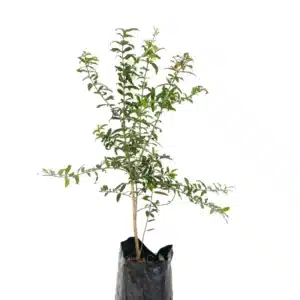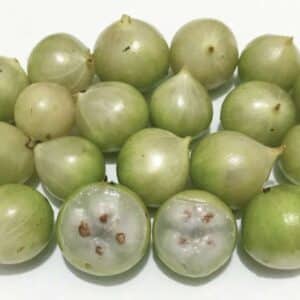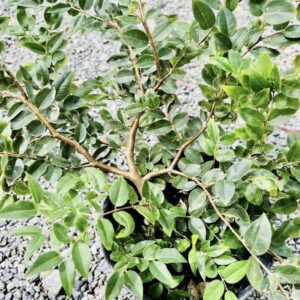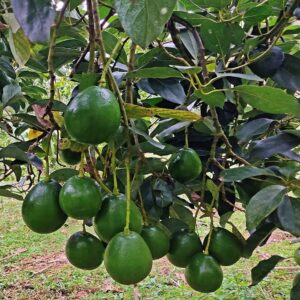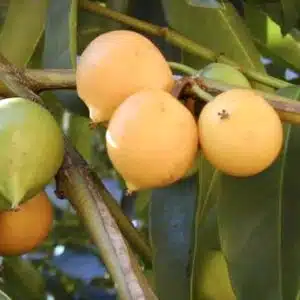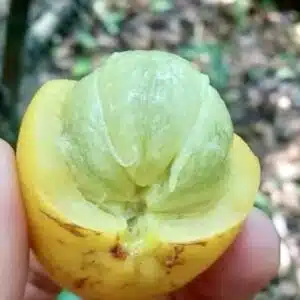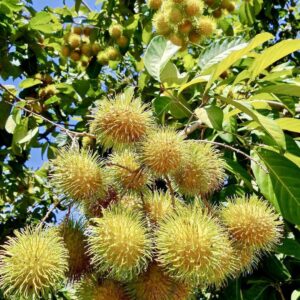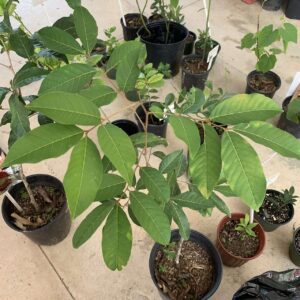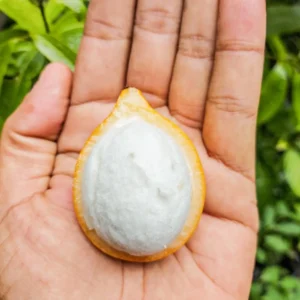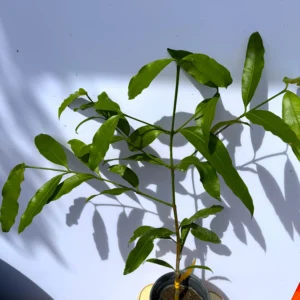Grafted mango ( mangifera) tropical fruit tree Edward 3’-4’ tall
Edward mangoes are prized for their exceptional sweetness, rich flavor, and smooth texture. They are a popular choice for fresh consumption, juicing, and culinary uses due to their delightful taste and minimal fiber content. Whether enjoyed on its own or incorporated into various dishes, Edward mangoes are a delicious and versatile tropical fruit variety.
Bullock’s Heart (Annona reticulata) tropical live fruit tree 12″-24″
The Bullock’s Heart (Annona reticulata) is a tropical treasure, offering delicious fruit, ornamental beauty, and cultural significance. Its creamy, sweet pulp and unique appearance make it a favorite among fruit enthusiasts and gardeners alike. With proper care, including regular watering, fertilizing, and pest management, this tree will thrive and reward growers with abundant harvests. Whether grown for its fruit, its aesthetic appeal, or its role in tropical ecosystems, the Bullock’s Heart tree is a valuable and rewarding addition to any garden or orchard.
Grafted Avocado pollock (Persea americana) tropical live fruit tree 12”-24”
Grafted Mango haden living big fruit tree
Mango Haden is a popular mango variety known for its delicious flavor and vibrant yellow skin. The medium to large-sized fruit has smooth, juicy flesh that is sweet and tangy. The mango tree itself is medium in size and produces abundant fruit. It is a tropical tree that thrives in warm climates and requires well-draining soil and regular watering. Mango Haden is highly sought after for its exceptional taste and is enjoyed fresh or used in various culinary creations. With its rich flavor and appealing appearance, Mango Haden is a delightful addition to any fruit garden or tropical landscape.
Grafted Avocado Candelaria (Persea americana) tropical live fruit tree 12”-24”
The Candelaria Avocado grafted tree is a premium variety of avocado known for its high-quality fruit and early fruiting characteristics. Being a grafted tree, it inherits desirable traits from the parent plant, such as superior fruit size, flavor, and consistent yields, while also producing fruit much earlier than seed-grown trees. This makes the Candelaria avocado a sought-after variety among home gardeners and commercial growers alike.
White Jaboticaba (Plinia cauliflora) Tropical Living Fruit Tree 12” inches
White Jaboticaba Jaboticaba, also known as Brazilian grape tree, is a fruit tree native to Brazil that is now commonly grown in tropical and subtropical regions around the world. The tree produces small, grape-like fruits that are ligth green in color and have a sweet, juicy flesh. In this description, we will discuss how to plant and care for Jaboticaba trees, and some of the benefits they can provide.
An interesting fact about Jaboticaba trees is that they have a unique growth pattern. Unlike most fruit trees, which bear fruit on the ends of branches, Jaboticaba trees bear fruit directly on the trunk and larger branches. This means that the entire tree can be covered in fruit, creating a striking visual display. In addition, Jaboticaba trees have a relatively long lifespan, with some trees living for over 100 years. The combination of their unique growth pattern and longevity makes Jaboticaba trees a fascinating and rewarding addition to any garden or landscape.
Grafted Avocado CABRE (Persea americana) tropical live fruit tree 12”-24”
The Grafted Avocado Cabre variety is a sought-after avocado known for its excellent fruit quality, consistent yields, and early production. Grafting ensures that the tree inherits desirable traits from the parent plant, such as superior flavor, size, and disease resistance, making the Cabre avocado a preferred choice for home gardeners and commercial growers alike.
Grafted Yellow Rambután (Nephelium lappaceum) exotic fruit live tree 24”-36”
Golden Rambutan, a rare and sought-after variety, is a prized addition to tropical fruit collections. This distinct cultivar, a variation of the traditional rambutan, is celebrated for its vibrant appearance and unique flavor.
Interesting Fact about Golden Rambutans:
Golden Rambutans are relatively rare compared to their red counterparts. Their unique color and slightly varying taste make them a sought-after delicacy among fruit aficionados. This distinct hue in the rambutan family adds an intriguing and exotic touch to fruit collections and culinary experiences.
Achacha (Garcinia humilis) exotic fruit tree 2′-3′ feet tall
Garcinia achachairu is a remarkable tropical fruit tree that combines ornamental appeal with high-quality, flavorful fruit. Its manageable size, drought tolerance, and minimal pest problems make it suitable for home gardens, small orchards, and urban farming projects. With proper care, including regular watering, fertilizing, and occasional pruning, the Achachairú tree can thrive and reward growers with abundant harvests of tangy, refreshing fruit. Whether grown for personal enjoyment or small-scale commercial purposes, this unique fruit tree is a valuable and rewarding addition to any tropical or subtropical landscape.

